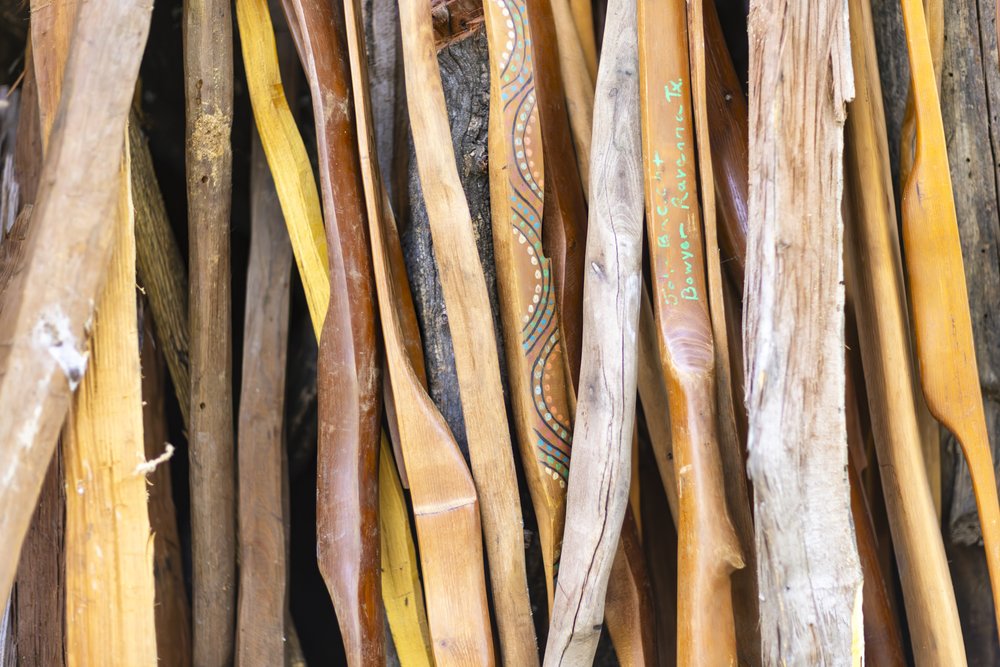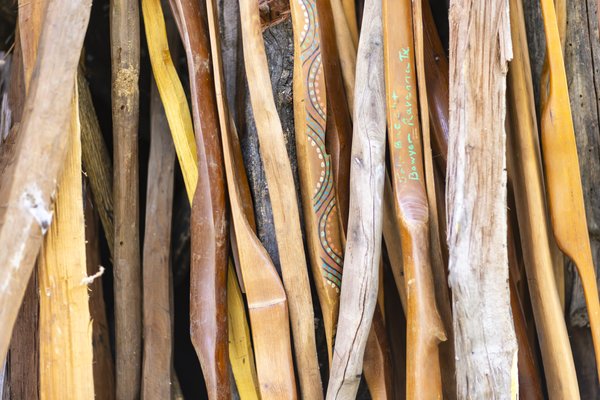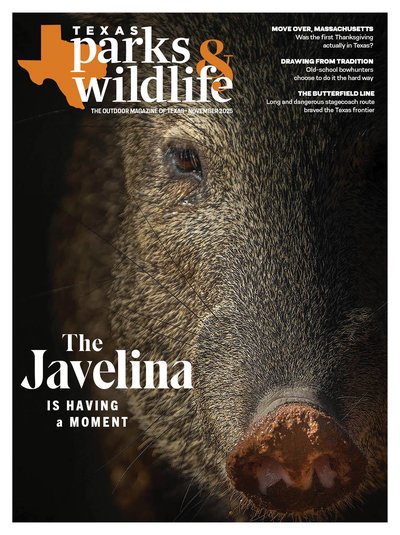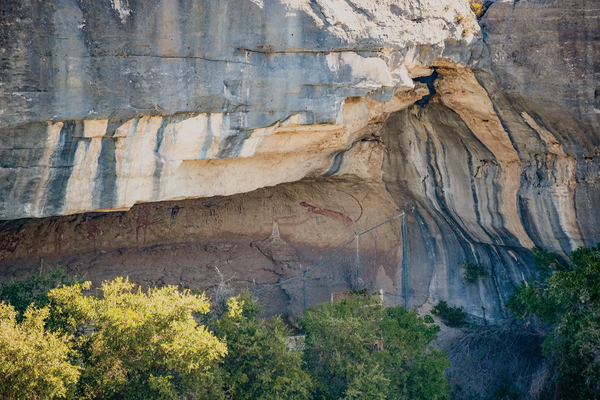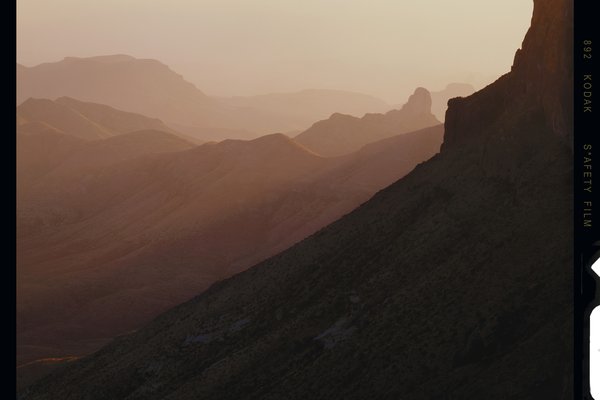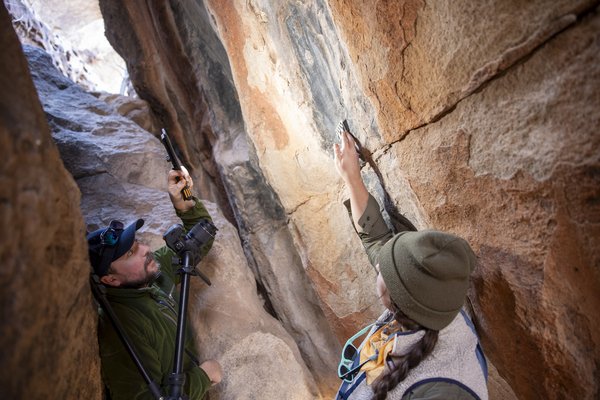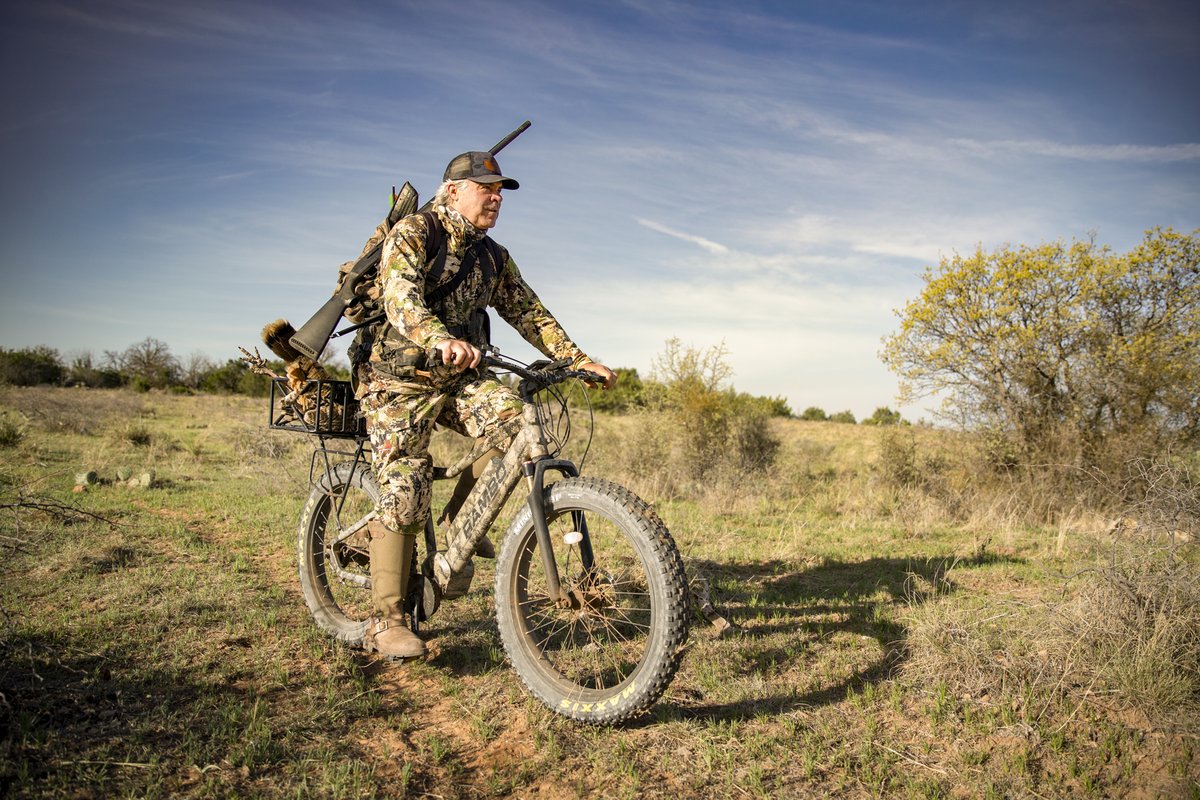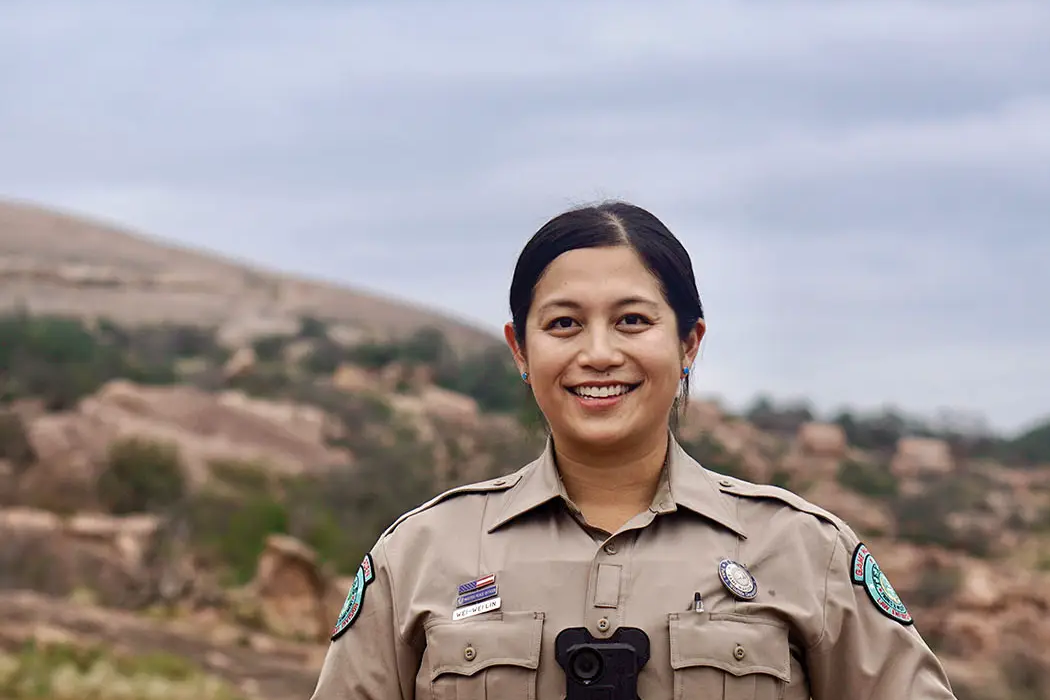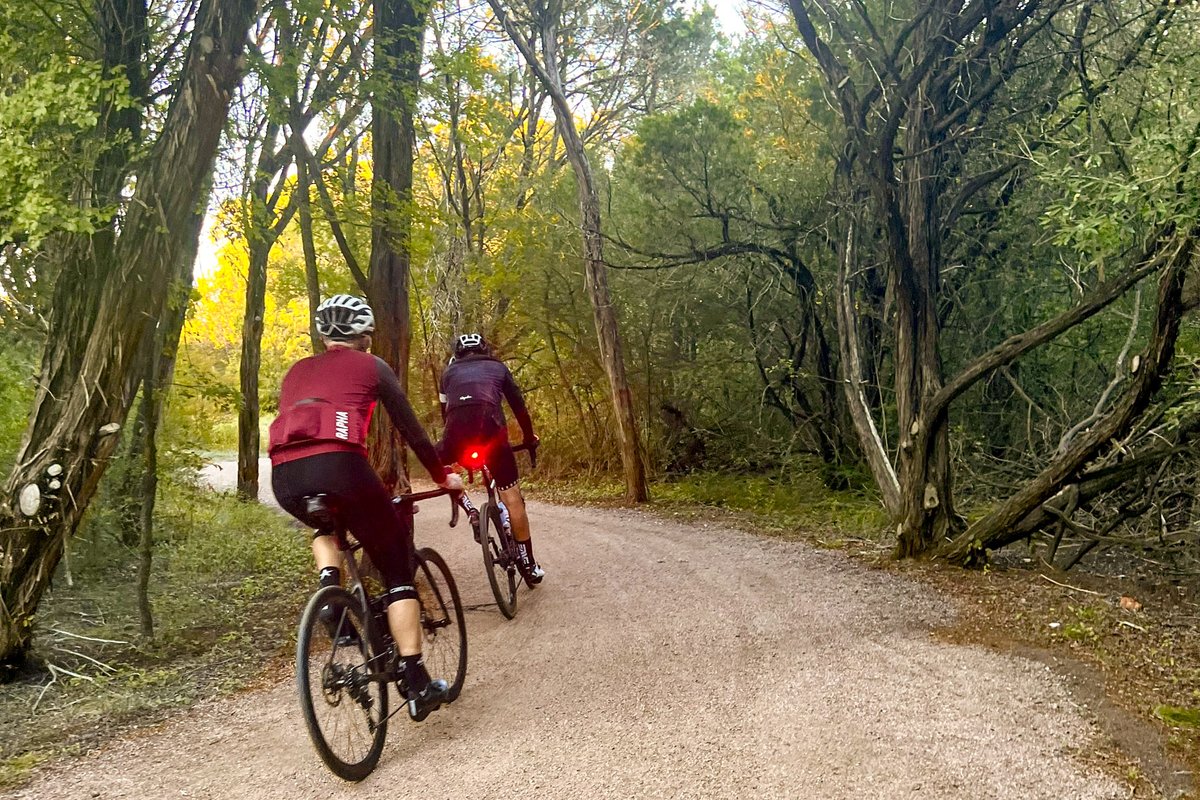"Come look at this,” he says, snaking a long woolen protective sock off his newest prize. “Look at the workmanship on this thing."
My brother’s name is William, but the family calls him Bubba, and he’s unveiling the latest bow in his collection. He’s a lifelong hunter who has spent his life in pursuit of the things that don’t come easy: He is a retired U.S. Army combat soldier who served in Iraq and Afghanistan with the 101st Airborne Division; he’s a leader in the national movement to preserve the traditions of bowhunting and the slow way of hunting with a longbow, recurve or self bow; and he’s an ardent traditional bowhunter himself who spends about 100 days a year hunting from Texas to Mexico to Alaska.
He holds the bow in his hands. It’s a classical Texas creation. Custom made from mesquite and bois d’arc (pronounced bow-dark) wood, it’s laminated in alternating layers, and the face of the bow is gilded with a diamondback rattlesnake skin adornment. The bow’s handle is wrapped in brown leather, sanded to roughen the texture and establish a grip. In contrast, a smoother, more refined leather lays upon the arrow’s rest to soften the friction when drawing an arrow or when the arrow is loosed. The only modern thing about the bow is the synthetic braided bow string made from rayon. Traditionally, these strings were made from bison gut or the intestines of other ungulates. However, these days, it’s easier to have them commercially produced.
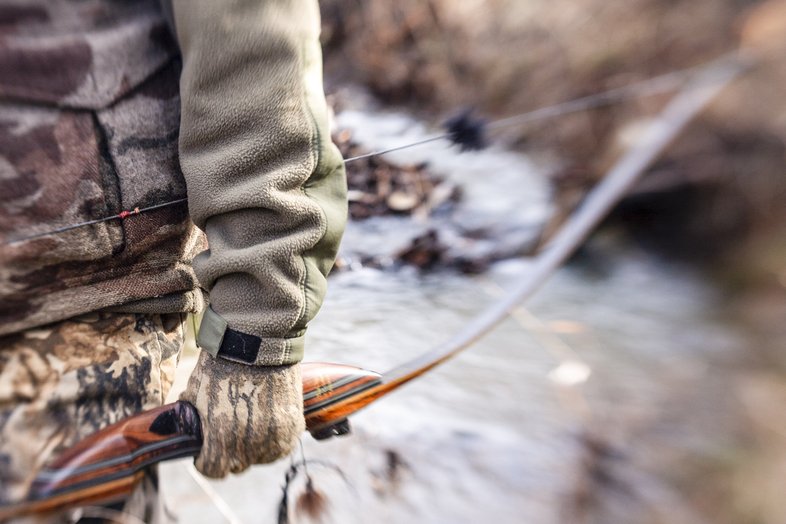
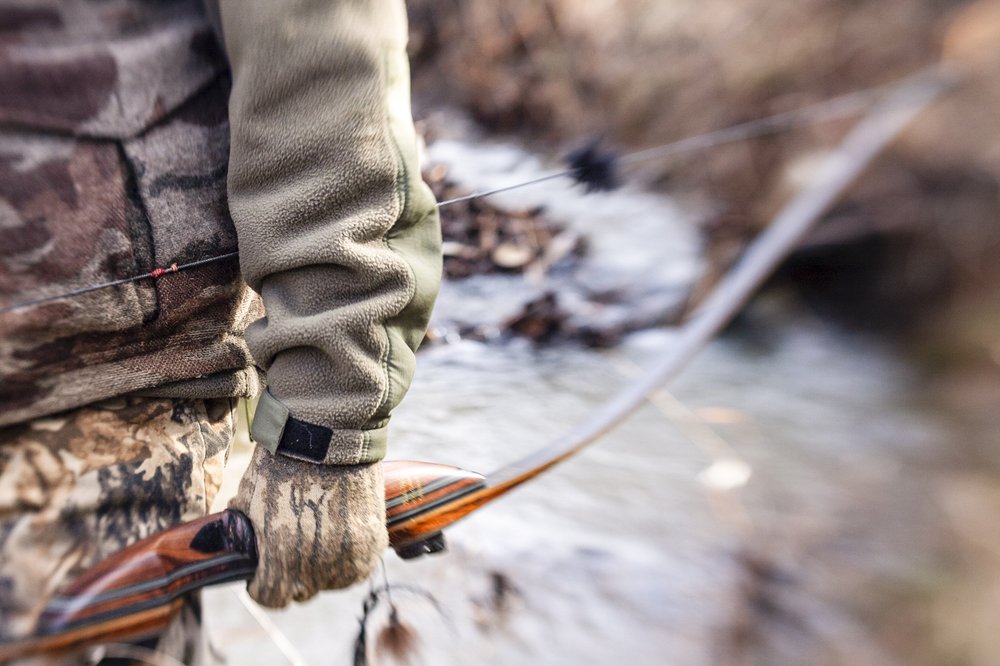
A hunter carries a recurve bow.
A hunter carries a recurve bow.
On the bowstrings, whose intertwined fibers create alternating bands of black and yellow, tufts of beaver hair are spliced in, forming a ball at the top and bottom of the string. These additions help dampen and quiet a bowstring when an arrow is fired. In the middle of the string is a little bump of rawhide windings. The nock is an index point to place an arrow precisely each time one is loaded.
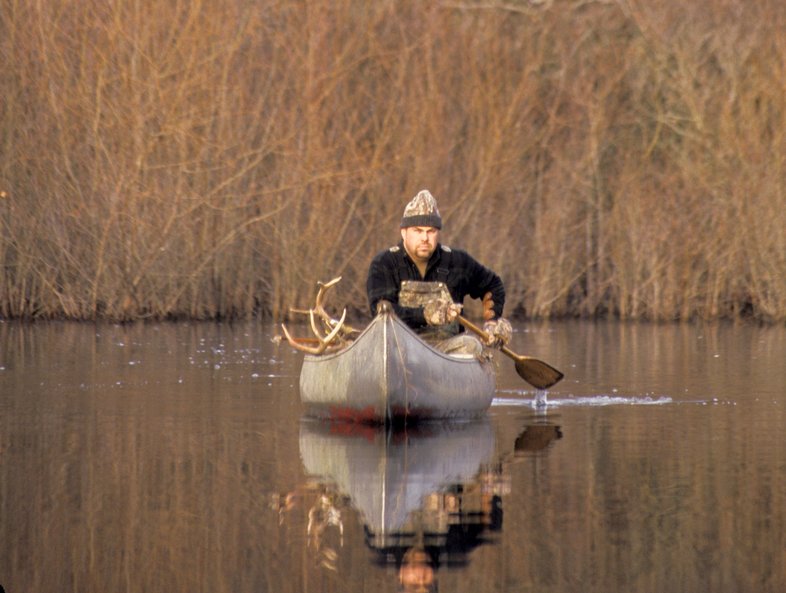
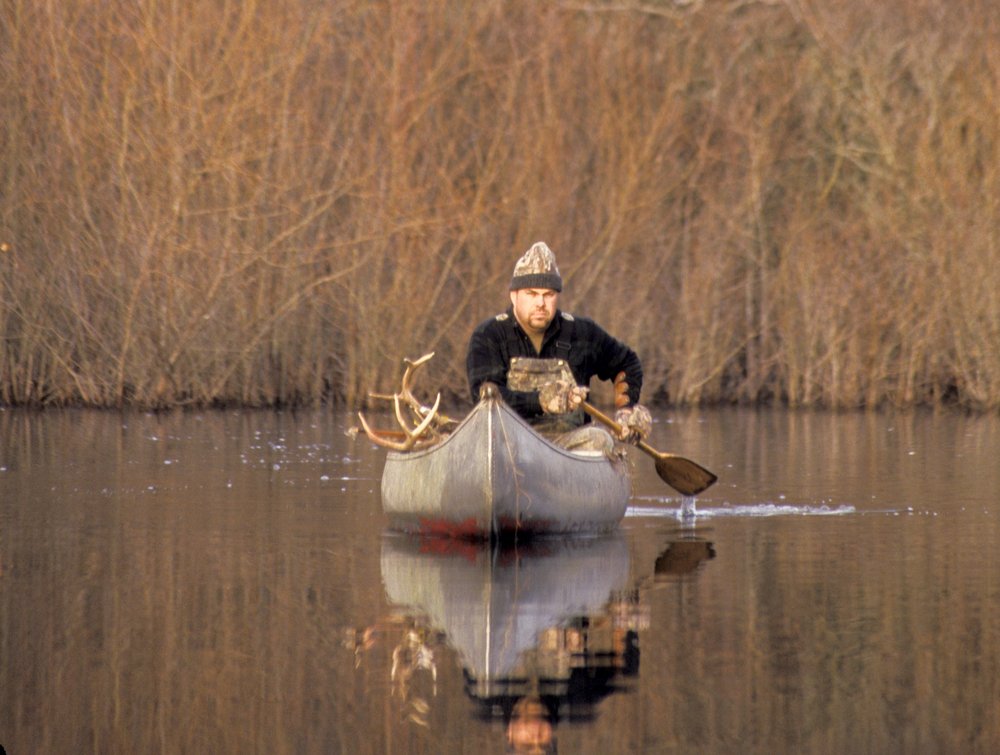
William Graves ferries a freshly harvested Fannin County buck across a creek on a bowhunting trip.
William Graves ferries a freshly harvested Fannin County buck across a creek on a bowhunting trip.
At the least, the bow is a bona fide work of art. However, the maker intended the bow to be deadly. Once a cedar arrow is nocked and the bowstring pulled, the flex of the bow stores up an incredible amount of potential energy.
Unlike a modern compound bow, where a series of cams and cables reduce the holding weight of a drawn arrow, a traditionally made stick bow has no let-off, which means it takes greater strength and stamina to draw. As such, a traditional bowhunter’s draw is a quick and smooth pullback and release that’s been used for centuries.
When the archer’s fingers relax, the bow limbs flex, and the passive energy stored therein is transferred to the bowstring. In an instant, the string lunges forward, releasing the arrow downrange at incredible speeds.
Hunting with traditional archery equipment is a slow pursuit with a low success rate. The reduction in draw power means traditional hunters must get closer to their quarry, which requires greater skill. Still, those who enjoy the challenge wouldn’t have it any other way.
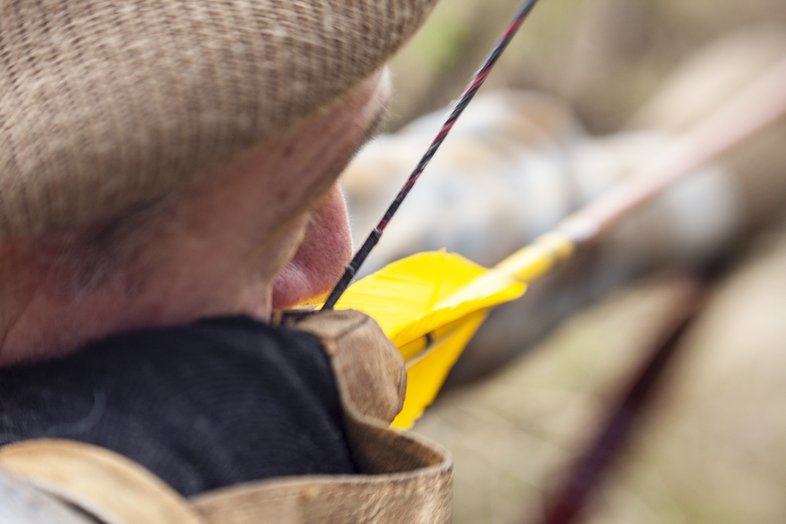
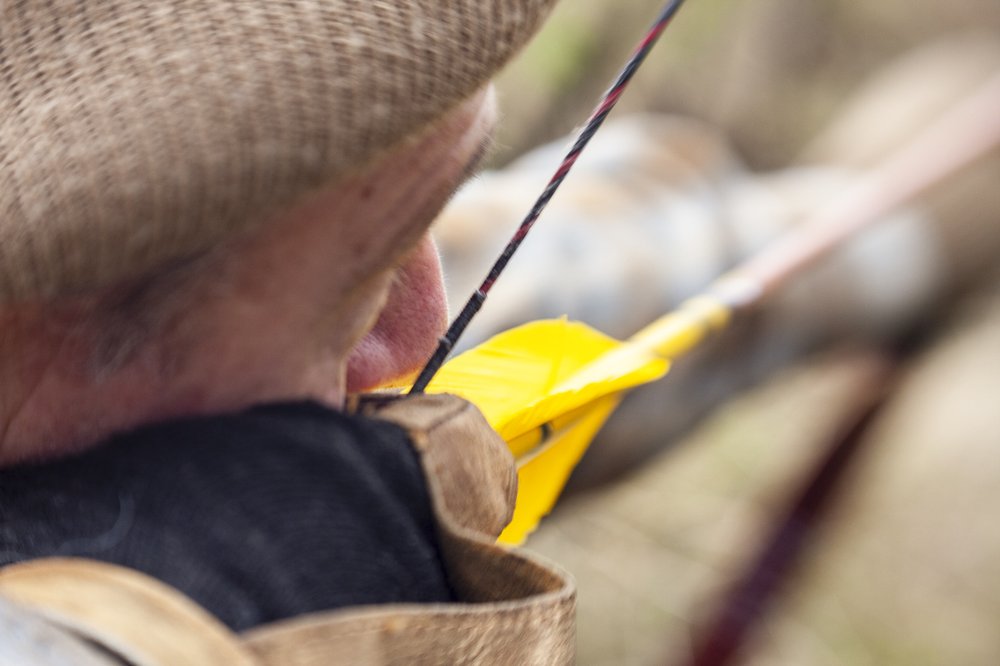
Traditional bows require greater strength to draw than modern bows.
Traditional bows require greater strength to draw than modern bows.
A Connection to the Past
Modern bowhunting has roots in many places, but they all trace back to human use of bows as a tool for obtaining food and as a tool of war. The earliest known bow-related artifacts come from South Africa and date back 70,000 years.
For centuries, the technology of bows remained essentially unchanged. At its basic construct, any bow is simply an energy transfer device that uses elasticized wood (or, in modernity, composite materials) in its limbs. The limbs connect to a handle or riser and a string. As the string is pulled, the energy is stored in the limbs. When released, the energy is transferred to the arrow, giving the arrow speed and accuracy downrange.
For much of human history, the bow has been a key device used to harvest game and conduct warfare. It wasn’t until the advent of firearms that bows took a backseat as a primary human tool.
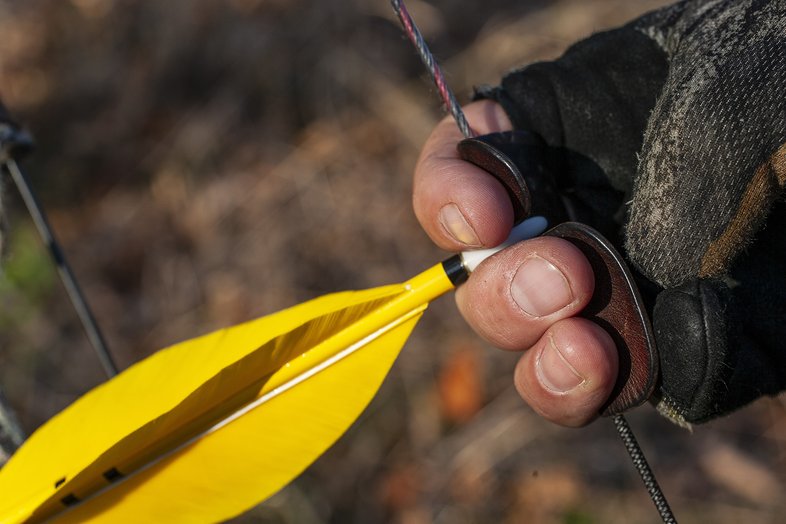
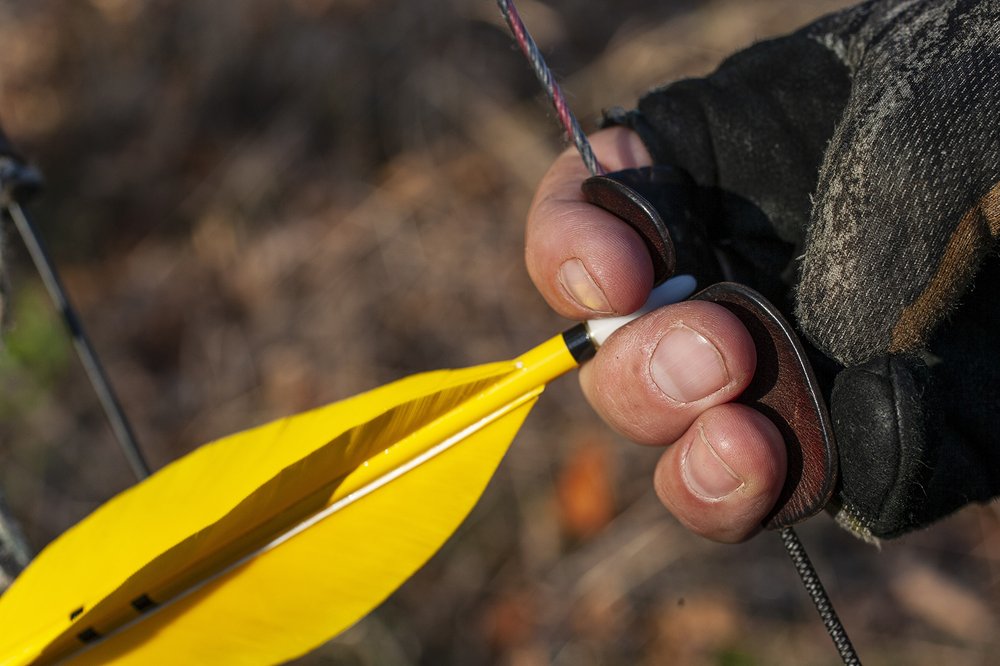
An arrow is nocked before firing.
An arrow is nocked before firing.
In the 20th century, as the country changed from an agrarian to an industrial society and the modern wildlife conservation movement took hold, recreational hunting came of age. Combining a spirit of adventure with modern manufacturing methods, people like Fred Bear (a pioneering bow hunter, adventurer, filmmaker and founder of Bear Archery) helped spark the interest in bowhunting as a means and method to harvest game. Like any movement, as the popularity of bowhunting grew and equipment became more high-tech, a subset of bowhunters sought out more simple ways to pursue wild game and spend time in nature. As such, the traditional bowhunting movement began to organize under the auspices of organizations like the Professional Bowhunters Society in the early 1960s.
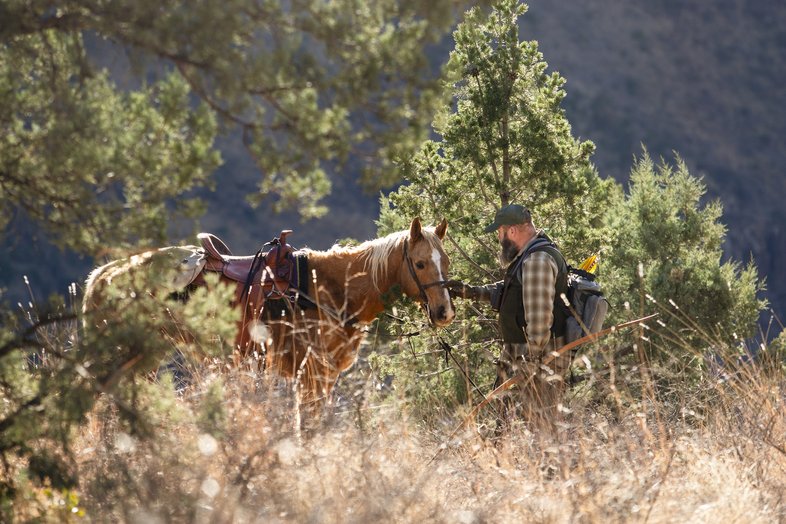
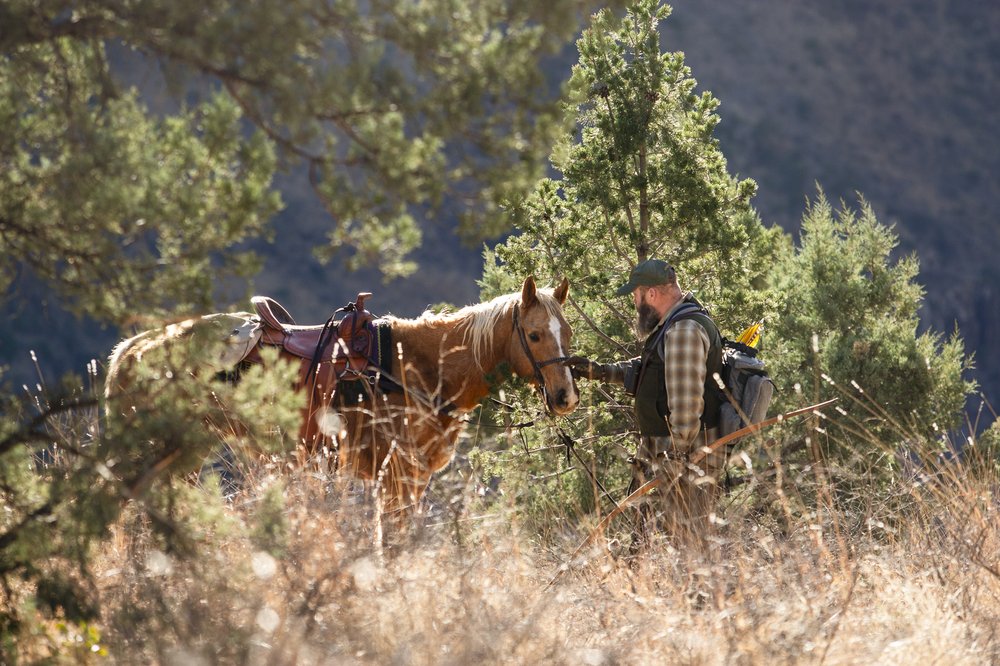
William Graves on a horseback hunt for javelina in the Davis Mountains.
William Graves on a horseback hunt for javelina in the Davis Mountains.
The Roots of the Movement
“Fred Bear was definitely one of the guys who popularized hunting with a longbow or recurve,” explains William Graves. “When I started bowhunting in the early 1980s, there weren’t many companies making bowhunting equipment like today. Bear Archery was among the most prominent companies. He [Bear] epitomized the spirit of adventure in his hunts, and that inspired me to take up traditional archery.”
Now retired from the Army, Graves devotes much of his time to promoting the sport of traditional bowhunting. He serves as the vice president of the Professional Bowhunters Society, an organization that preserves bowhunting’s traditional values by encouraging hunters who value woodsmanship and close-range hunting experiences. As hunting goes, there’s an extremely high chance that you go season after season without harvesting anything.
“You gotta love the woods,” says Graves. “To hunt with a recurve or a longbow, you have to love the experience more than you love the results. There’s a high chance that you might miss an animal a time or two most years and not come home with anything at all. With traditional bowhunting, it’s about the sport’s traditions and passing those lessons down to a younger crowd.”
Jesse Johnson is one of those younger enthusiasts who’s embraced traditional bowhunting wholeheartedly. The 30-year-old construction manager and youth pastor is originally from southern Louisiana but now lives in Dallas with his wife and two kids.
Like many, Johnson started hunting early. He started hunting with a compound bow when he was 12. By his admission, he was hooked on bowhunting from that point.
“In my later teenage years, I was introduced to an individual who hunted with a traditional bow,” says Johnson. “In my early 20s, I finally transitioned to using only traditional bows when bowhunting.”
Johnson says his first few years were rough, and he learned numerous lessons with plenty of blown opportunities. With perseverance and the help of a few good mentors, he began to achieve some level of success. However, success isn’t always defined as a tagged animal.
“I still have a lot to learn,” he says. “My biggest lesson learned so far is that the journey is the true success. Being a bowhunter is more than just punching tags. It’s about representing and preserving the heritage of bowhunting, being ethical in my pursuits and influencing others to do the same.”
The best thing about traditional bowhunting, he says, “is the challenge of it all. Traditional bowhunting makes you a better hunter and student of animals and nature. It’s pure, ethical and satisfying.”
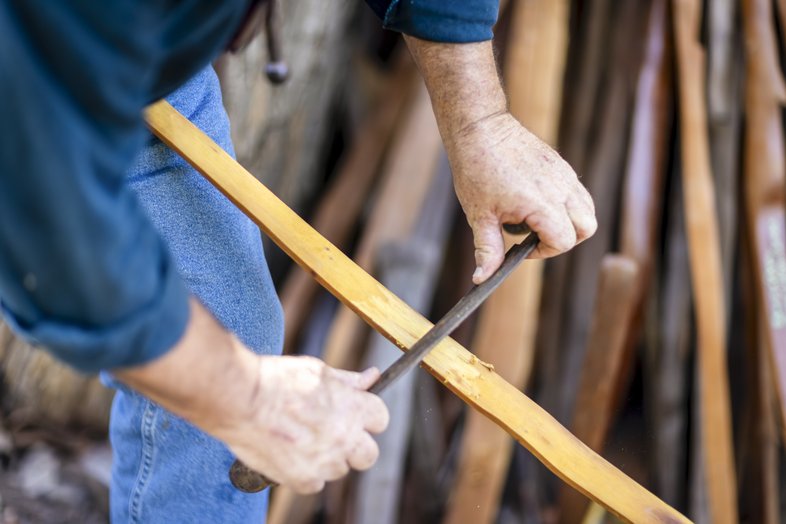
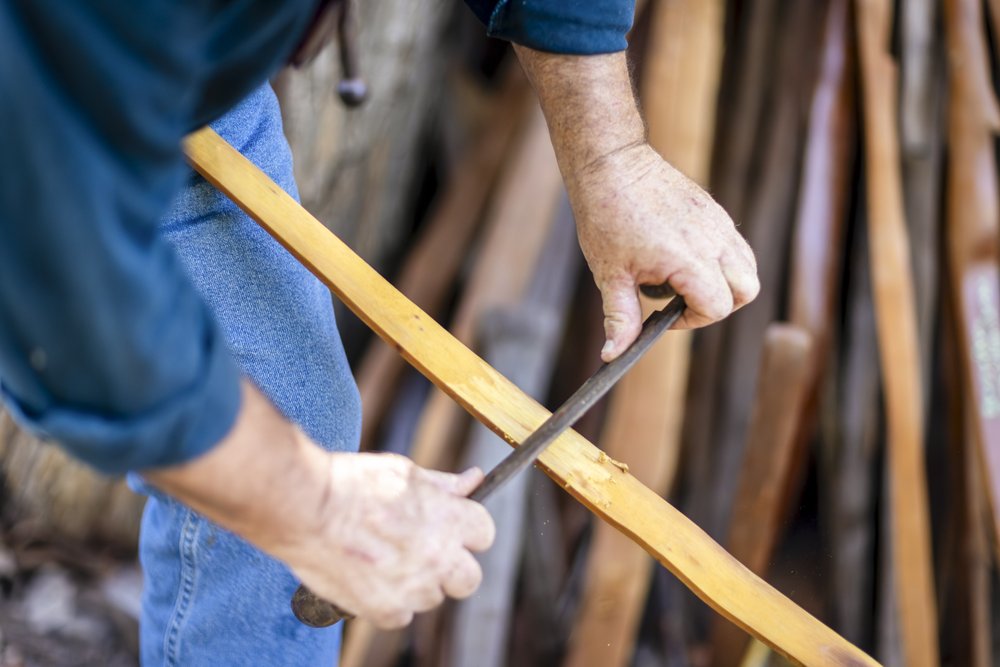
John Baecht prepares bois d'arc wood to make a bow.
John Baecht prepares bois d'arc wood to make a bow.
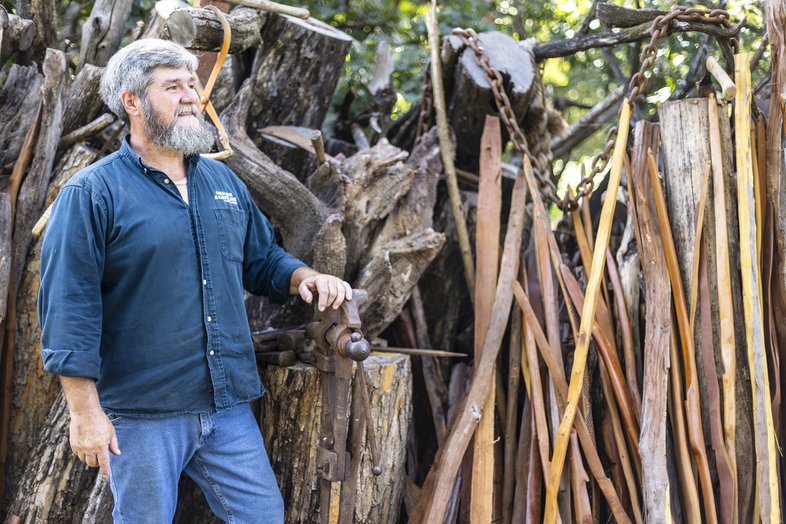
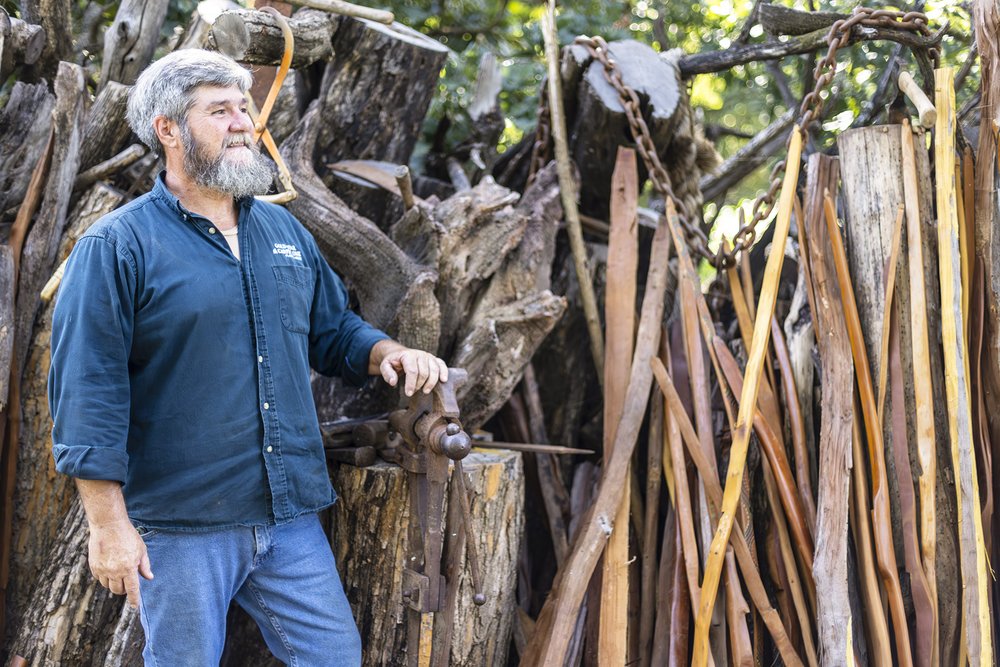
Baecht loves the connection with history he feels crafting traditional bows.
Baecht loves the connection with history he feels crafting traditional bows.
Where History and Modernity Collide
From his workshop on a farm just spittin’ distance from the Red River, John Baecht may be the biggest cheerleader the bois d’arc tree has ever had. He goes by John Bois d’Arc, and his online megaphone is called Bois d’Arc Kingdom. It’s an online community of tens of thousands of folks interested in learning more about the bois d’arc tree and its uses. Baecht grew up on a farm in Fannin County, where the tree is steeped in local lore and culture. The tree’s name is French and means “bow wood.” Baecht is an expert in all of the tree’s uses, including as a material for bow making.
Native Americans in what is now North Texas used the wood extensively for bows and even traded the wood as a commodity to other tribes. It got its name from French explorers who observed these uses. Aside from bows, you can use the bois d’arc for fence posts, live fence rows, utensils, house foundations and any other use where stable, rot-free wood is needed.
Baecht loves the wood for making his own bows. He’s been making them since he was a young boy and has developed such a knack for making custom bows that the Choctaw Nation has commissioned him to build numerous bows for the tribe over the years.
Using long, single pieces of fresh bois d’arc branches or logs, Baecht lets them dry and treats them with wood glue to penetrate all of the cracks and limit cracking. After that, he forms the bow with a draw knife and shapes it so it’s ready to mount a string and be used in the field. He often demonstrates the process for crowds at festivals and educational demonstrations.
“I’ve had some shoulder issues, so until I get that fixed, I can’t use a draw knife as well anymore,” he says. “Instead, I now use an ax to remove wood from the bow staves and craft it into shape.”
Like Graves and Johnson, John Bois d’Arc loves the connections he shares with history and the old way of doing things. That appeal brings many into the traditional archery fold.
On a windy January day, I join my brother and a small group of traditional bowhunters from all over the country at an immense ranch in the Davis Mountains. I can sense the group’s excitement as we ready the horses for the pack-in, pack-out adventure. For a week, these guys will leave behind their jobs and modern ways of life to sleep in a tent some 10 miles up a dry creek bed. They will test themselves and their woodsmanship skills in an attempt to get within just a few yards of a javelina or a feral hog.
Nothing about this experience is easy, and that’s part of the appeal.
“You don’t hunt by traditional means because it’s easy,” explains Graves. “You do it because it is a challenge and hard. By the time we get to hunt, we’ve spent countless hours in our backyards practicing. We’ve spent probably just as many hours working on arrows or our gear. More than anything else, we’ve spent so much time in the woods just watching and learning about nature and the game we pursue.”
As we ride in to set up camp and hunt, it’s clear that folks here have a different focus than many hunters. While the harvest is always the ultimate prize, it’s only a small portion of what brings traditional bowhunters satisfaction.
“Man, look at these mountains,” marvels Graves.
